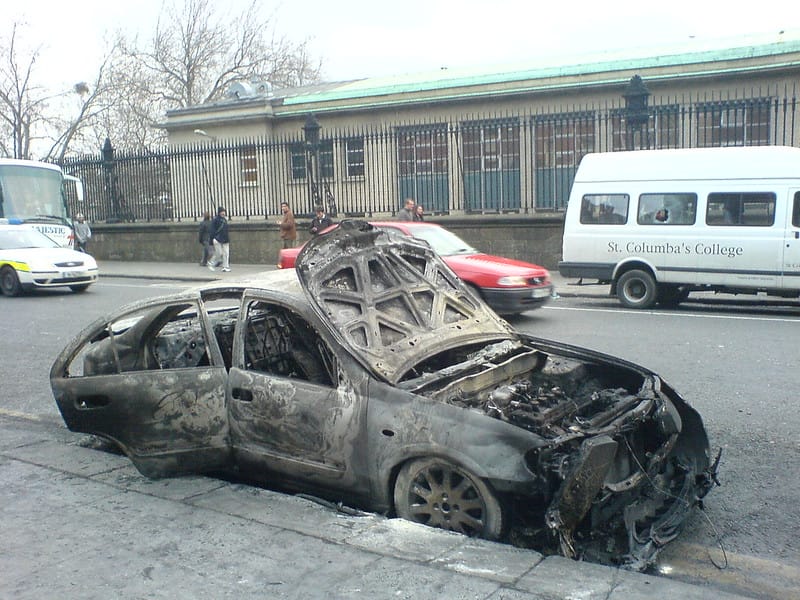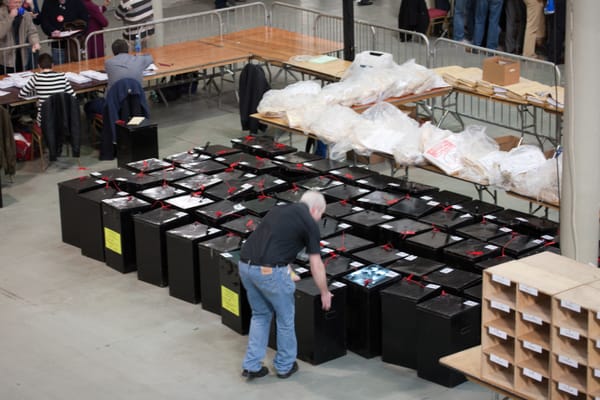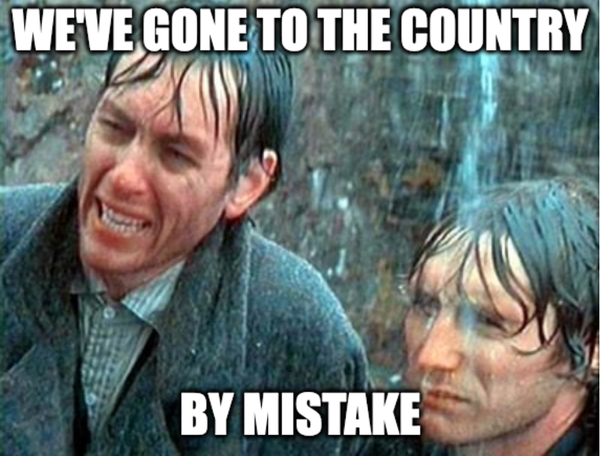The Gist: A foreseeable surprise
A riot in Dublin was triggered by longstanding far right networks, taking advantage of a shocking crime. This is the Gist.

A riot in Dublin. What a strange, unpleasant, idea.
On the 23rd November, there was an unforeseeable and terrible event resulting in children and adults being hospitalised, some still in grave condition. We should hold those people in our minds, just as we do all the victims of shocking crimes.
That crime was an unpredictable event. The consequences of that unforeseeable event, in contrast, were so foreseeable as to have been the topic of public speculation even in the hours before they happened. The well-known machinery of disinformation and incitement sprang into action. Telegram groups and X-Twitter networks popped off. The people running them told followers that children had been killed. They told them they should go out on the streets. They incited indiscriminate violence against anyone who looked like they weren't pasty white enough for their liking. And then, once disorder had broken out, it acted as a magnet to people who were excited to find they could use it as a cover to get a five fingered discount on a new pair of runners.
That was all foreseeable, because they had done it all before. There is now a well-established small network of racist far right agitators in Ireland who have spent the last few years jumping from hot topic to hot topic, looking to recruit people into radicalisation by chasing that heat. This has happened in full view with no effective action taken to disrupt it.
In February of this year, Niamh McDonald of the Hope and Courage Collective (who track and research responses to this sort of agitation) made a submission to the Oireachtas Committee on Children, Equality, Disability, Integration and Youth. She warned then;
The digital platforms are the key mechanisms driving hate, disinformation and manipulation. Meta, Twitter, Tik Tok and YouTube are systematically failing to enforce their own Community standards including ignoring reported harmful content. YouTube in particular is assisting in the monetization of protests.
In September of this year, she gave an interview to Patrick Freyne of the Irish Times where she expanded on the approach her organisation had evolved to assist communities targeted for angrying-up by the far right. It relies on locally-led community de-escalation. They aim to cool feelings, where the far right aim to heat things up.
“There’s an innate reaction to get out and counter protest. But then you’re shouting at your neighbour across the road who you’ll have to meet in the post office. So what do we want to achieve? We want the far right to leave our communities and to separate people from the ideas of the hatred and the extremism. If we go out and chant ‘racist’ it’s going to deepen divisions and it’s going to polarise. And we’re not going to have any discussions we need, to understand why some people feel the need to go on to these protests ... Who do we know in there that can talk to that person? ... Because when the far right leave, which they will do when they don’t get what they want, the communities are left with that.”
All of which is to say, both the causes, methods and responses to far-right radicalisation have been known- and people have been talking about them - for years.
People can come to hold strongly expressed harmful views about things they held no views on previously. In fact, most people are persuadable to one position or another on lots of questions, if they are framed in a way that triggers emotion.
If I've never thought about whether clarified butter is a nice ingredient option or a profound insult to my national mashed potato traditions, but it suddenly becomes a test of my tribal identification or my worth as a parent, I am likely to suddenly hold strong opinions about it and argue for one side or the other. This is despite the fact that I may have never encountered any clarified butter in my life.
Make the issue heated enough and neighbours will start calling each other Ghee-bags on community Facebook pages.
That doesn't mean we need "a conversation" on the merits of clarified butter. Accepting that framing is just an amplification mechanism for the bad faith fights on the declared topic. Instead it means we need to recognise that driving wedges into society on emotional issues is the purpose of all this agitation. Upgrading the location of those arguments from social media to mass media is the opposite of what is needed.
The primary political and policing response to the risk of the far right has been to dismiss them as irrelevant. As Mick Clifford said mockingly,
Right-wing extremism certainly exists, but it is confined largely to online echo chambers and a limited number of headbangers.
Given the far right organisations had memberships in the low two digits, he joked that maybe they should "hire a minibus to go on a recruitment drive around the country."
Unfortunately, that is exactly what they have been doing, online and off.
This is a policing and a political problem. Neither function had recognised the nature of the problem they face, because they were using the wrong metrics. Politicians were reassured by the perpetual failure of explicitly far-right political candidates. And the police considered their risk in terms of containment and balance. And nobody has made the cash-cows of the social network platforms carry their share of responsibility.
But this is also a social problem. And here, I think, we can all do something constructive. Shocking events that stir fear or anger may happen at any time. But if we have spoken about the risks of disinformation in advance with our friends and communities, we have done the work of social inoculation against the viruses these networks try to spread.
We can do our part and still expect those with institutional influence to do theirs.



